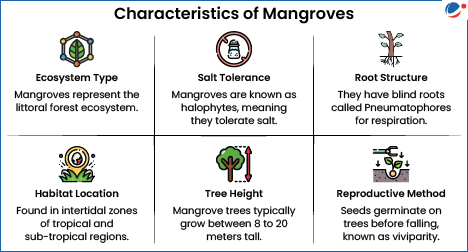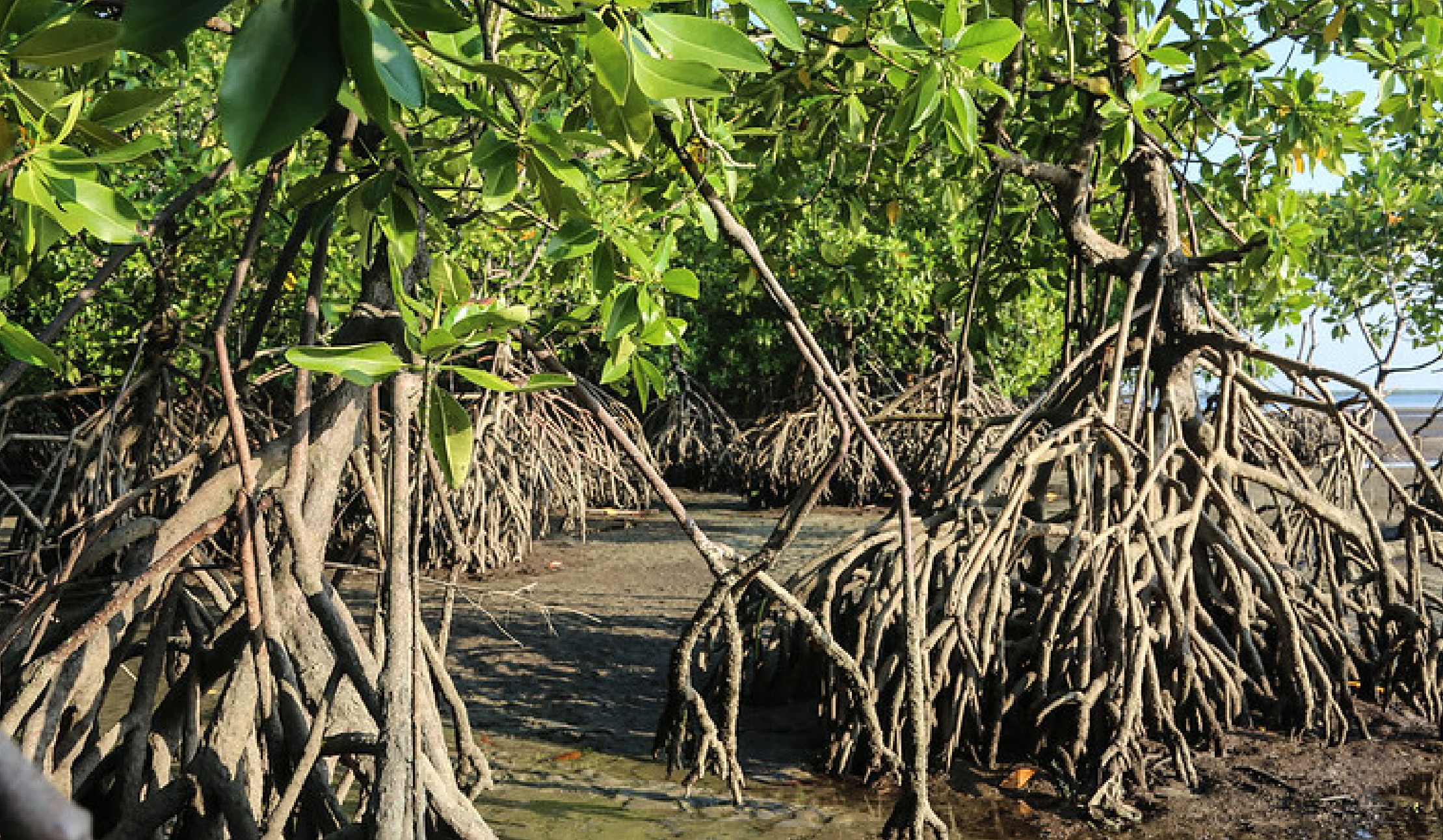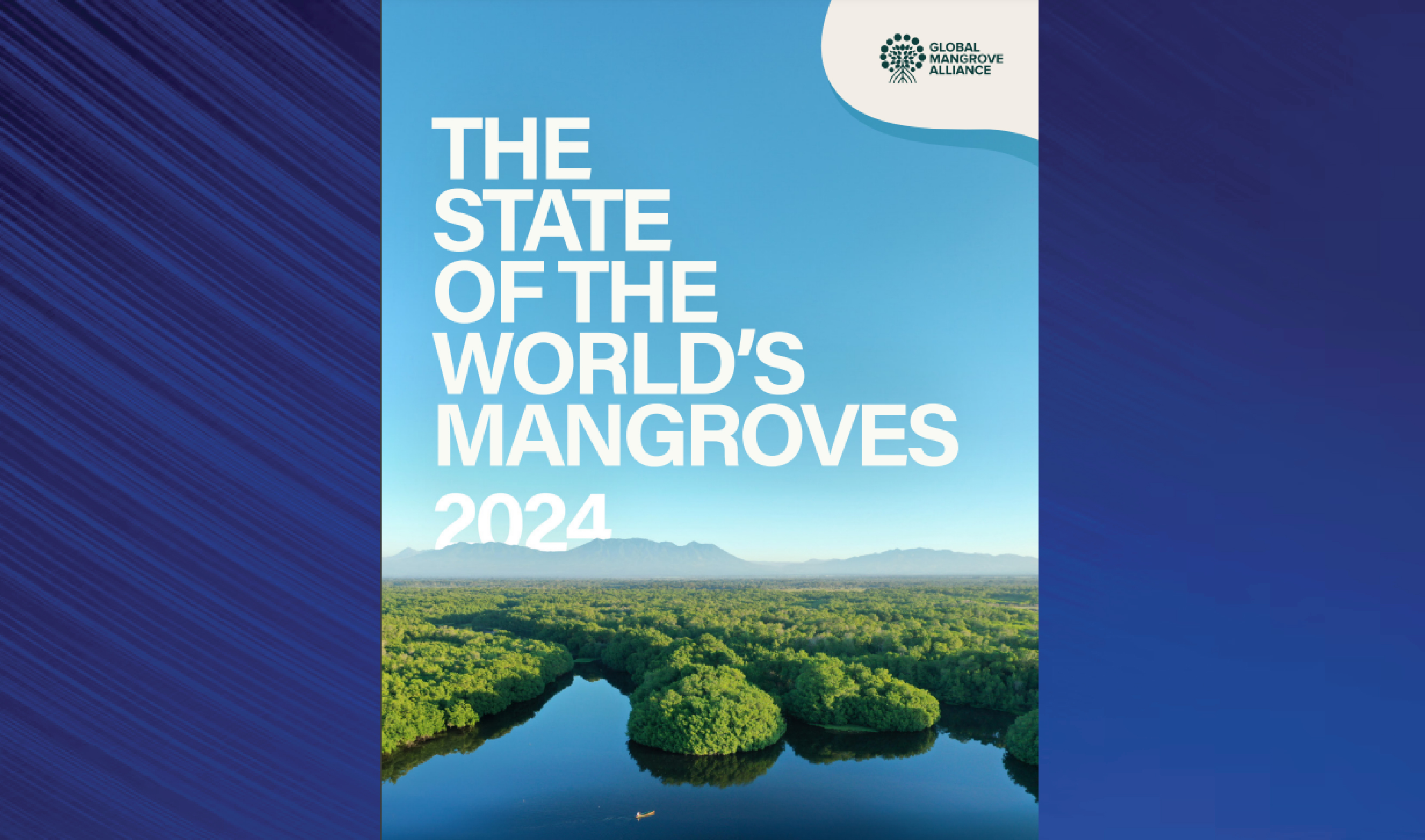Study shows that emergent coastal vegetation including mangroves is an effective defence system that significantly reduces the damage caused by tsunami waves to coastal infrastructure.
- Emergent vegetation is aquatic plants rooted in the soil, while their stems, leaves, and flowers emerge above the water surface.
About Mangroves

- Mangroves are emergent trees with sturdy submerged roots, stiff stems, and trunks to reduce wave forces and acts as natural bio-shields against extreme ocean disasters.
- Significance:
- Improve water quality: By filtering out nutrients and sediments.
- Supports biodiversity: Serve as nursery, feeding and breeding grounds for crabs, prawns, mollusks, birds, reptiles and mammals.
- Food and Livelihood Security: Source for essential nutrients such as protein, omega-3 fatty acids, vitamins, grazing grounds for livestock, source of fuelwood and charcoal etc.
- Carbon Sink: Mangroves stores an average of 394 tonnes of carbon per hectare.
- Coastal Protection: Lower propagation speeds, inundation depths and overall flood extent by slowing down and redirecting storm surges and attenuating wind and swell waves.
- Threats: According to IUCN, 50% of mangrove ecosystems are at risk of collapse.
- Main threats include coastal development, deforestation for agriculture and shrimp farming, climate change and consequent sea-level rise and increased frequency of cyclonic storms.





